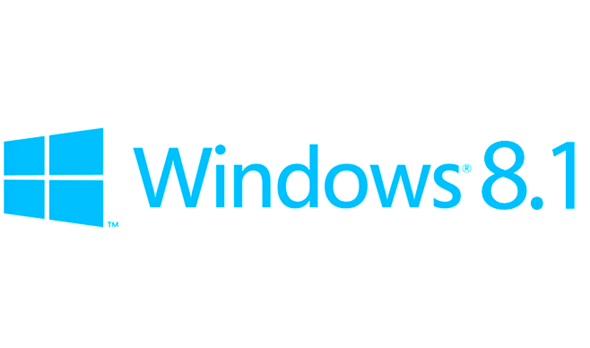Windows
8.1 (codenamed Blue) is an upgrade for Windows 8, a version of Windows NT, a
computer operating system released by Microsoft. First unveiled and released as
a public beta in June 2013, it was released to manufacturing on August 27,
2013, and reached general availability on October 17, 2013, almost a year after
the retail release of its predecessor. Windows 8.1 is available free of charge
for retail copies of Windows 8 and Windows RT users via the Windows Store.
Unlike service packs on previous versions of Windows, users who obtained 8
outside of retail copies or pre-loaded installations (i.e., volume licensing)
must obtain 8.1 through new installation media from their respective subscription
or enterprise channel. Microsoft's support lifecycle policy treats Windows 8.1
similar to previous service packs of Windows: It is part of Windows 8's support
lifecycle, and installing 8.1 is required to maintain access to support and
Windows updates after January 12, 2016. However, unlike previous service packs,
Windows 8.1 cannot be acquired via Windows Update and only accepts 8.1-specific
product keys.
Released
as part of a shift by Microsoft towards regular yearly major updates for its
software platforms and services, Windows 8.1 aims to address complaints of
Windows 8 users and reviewers on launch. Visible enhancements include an
improved Start screen, additional snap views, additional bundled apps, tighter
SkyDrive (now OneDrive) integration, Internet Explorer 11, a Bing-powered
unified search system, restoration of a visible Start button on the taskbar,
and the ability to restore the previous behavior of opening the user's desktop
on login instead of the Start screen. Windows 8.1 also added support for such
emerging technologies as high-resolution displays, 3D printing, Wi-Fi Direct,
and Miracast streaming.
Windows
8.1 received relatively positive reception, with critics praising the expanded
functionality available to apps in comparison to 8, its OneDrive integration,
along with its user interface tweaks and the addition of expanded tutorials for
operating the Windows 8 interface. Despite these improvements, 8.1 was still
criticized for not addressing all digressions of Windows 8 (such as a poor level
of integration between Metro-style apps and the desktop interface), and the
potential privacy implications of the expanded use of online services
Content :
Windows
8.1 (Core) / OEM / KMS/OEM-Activated
Windows
8.1 (Core) N / OEM / KMS/OEM-Activated
Windows
8.1 (Core) Single Language / OEM / KMS/OEM-Activated
Windows
8.1 Pro / OEM / KMS/OEM-Activated
Windows
8.1 Pro N / OEM / KMS/OEM-Activated
Windows
8.1 Pro VL / OEM / KMS/OEM-Activated
Windows
8.1 Pro N VL / OEM / KMS/OEM-Activated
Windows
8.1 Pro WMC / OEM / KMS/OEM-Activated
Windows
8.1 Enterprise / OEM / KMS/OEM-Activated
Windows
8.1 Enterprise N / OEM / KMS/OEM-Activated
Windows
Embedded 8.1 Industry Pro / OEM / KMS/OEM-Activated
Windows
Embedded 8.1 Industry Enterprise / OEM / KMS/OEM-Activated
System Requirements :
If you want to run Windows 8.1 on your PC,
here's what it takes:
·
RAM: 1 gigabyte (GB) (32-bit) or 2 GB (64-bit)
·
Hard disk
space: 16 GB (32-bit) or 20 GB
(64-bit)
·
Graphics
card: Microsoft DirectX 9
graphics device with WDDM driver
Additional requirements to use
certain features:
·
To use touch, you need a tablet or a
monitor that supports multitouch
·
To access the Windows Store and to
download, run, and snap apps, you need an active Internet connection and a
screen resolution of at least 1024 x 768
·
Microsoft account required for some
features
·
Internet access (ISP fees might
apply)
·
Secure boot requires firmware that
supports UEFI v2.3.1 Errata B and has the Microsoft Windows Certification
Authority in the UEFI signature database
·
Some games and programs might
require a graphics card compatible with DirectX 10 or higher for optimal
performance
·
Watching DVDs requires separate
playback software
·
BitLocker To Go requires a USB flash
drive (Windows 8.1 Pro only)
·
BitLocker requires either Trusted
Platform Module (TPM) 1.2 or a USB flash drive (Windows 8.1 Pro only)
·
Client Hyper-V requires a 64-bit
system with second level address translation (SLAT) capabilities and additional
2 GB of RAM (Windows 8.1 Pro only)
·
A TV tuner is required to play and
record live TV in Windows Media Center (Windows 8.1 Pro Pack and Windows 8.1 Media
Center Pack only)
·
Miracast requires a display adapter
which supports Windows Display Driver Model (WDDM) 1.3, and a Wi-Fi adapter
that supports Wi-Fi Direct
·
Wi-Fi Direct Printing requires a
Wi-Fi adapter that supports Wi-Fi Direct and a device that supports Wi-Fi
Direct Printing
·
Free internet TV content varies by
geography, some content might require additional fees (Windows 8.1 Pro Pack
and Windows 8.1 Media Center Pack only)
·
To install a 64-bit OS on a 64-bit
PC, your processor needs to support CMPXCHG16b, PrefetchW, and LAHF/SAHF
·
InstantGo works only with computers
designed for Connected Standby
If your PC is currently running Windows 7 or
Windows 8 you can check to see if it meets the requirements by running the Upgrade
Assistant. We also recommend that you visit your PC manufacturer's
website for info about updated drivers and hardware compatibility.
Download
Links :
32-bit :
Part1 : link
Part2 : link
Part3 : link
Part4 : link
Part5 : link
Part6 : link
64-bit :
Part1 : link
Part2 : link
Part3 : link
Part4 : link
Part5 : link
Part6 : link
Part7 : link
Part8 : link
Pass :
www.top2download.com










0 comments:
Post a Comment